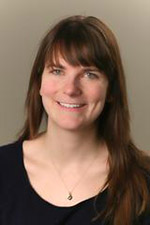
People expect to spend a lot of time in the waiting room when visiting a hospital’s emergency department, but the reality is that even after moving to a patient room the waiting continues. In a recent study, Northwestern Medicine investigators evaluated the amount of time patients talk with healthcare providers compared to how long they spend waiting in the emergency department.
In a sample of 74 noncritical visits, the study found that 25 percent of a patient’s time in a “care space” outside the waiting room was direct interaction with a physician, nurse or technician. The findings were published in the Journal of Emergency Medicine.
“On the flip side, this means that 75 percent of the time patients were in the care space they were waiting, again,” said Danielle McCarthy, ’06 MD, ’10 GME, assistant professor in Emergency Medicine.
Dr. McCarthy explains that there are many reasons for these lulls. It might be deliberate, or unavoidable.
“Sometimes the waiting is intentional – for example, to give a patient’s pain medication time to take effect,” she said. “Often, waiting is out of the control of the physicians providing care in the emergency department – for example, the hospital is full and no beds are available.”
Knowing the ratio of talk time to waiting time – a previously unexamined measure – can help healthcare providers think about the best way to reduce or optimize waiting time. Better plans can increase overall patient satisfaction.
The study investigators suggest that healthcare providers design waiting time in a way that can benefit patients. For instance, the downtime could be an opportunity to implement patient education interventions using videos or interactive mobile devices.
The investigators gathered data for this study using audio recordings from patient rooms. They focused solely on patients with four quick-turnaround complaints: ankle sprain, back pain, head injury and laceration.
Those in the sample spent an average of two hours in the emergency department overall, 76 minutes in the patient care space and 19 minutes interacting with healthcare providers.
“Patients who see these statistics will likely think that 25 percent is a very low percentage of time to be interacting with their providers, especially compared to an outpatient clinic visit,” said Dr. McCarthy. “However, emergency physicians are surprised it is that high because of the large volume of patients that we see and multiple demands on our time during a shift.”
Repeating the study on patients with longer visits to the emergency department would likely reveal a lower proportion of talk time, according to Dr. McCarthy, indicating additional need for providers to study how best to use those interludes.
Additional Northwestern Medicine authors include principal investigator Kenzie Cameron, PhD, ’08 MPH, Kirsten Engel, MD, Barbara Buckley, RN, third year medical student Annsa Huang, Francisco Acosta, Michael Schmidt, MD, and James Adams, MD.
The study was supported by the Davee Foundation Excellence in Emergency Medicine Grant.






